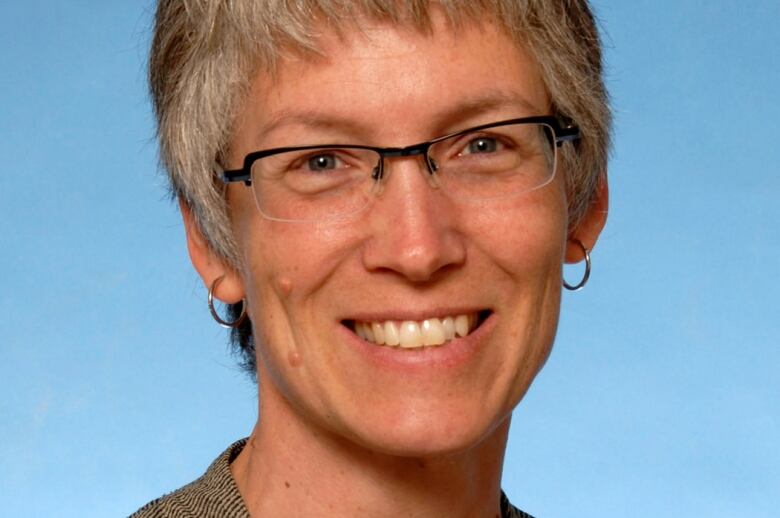Overlap between involvement in CFS care, Manitoba youth justice system 'hard to deny': co-author of new study
'Sometimes you have to put numbers on something to make it real,' says U of Manitoba researcher

Manitoba children and youth who were in the child welfare system were about five times more likely to be involved in the youth criminal justice system than those who were not, regardless of other factors, says a study released Tuesday.
The studytitledThe Overlap Between the Child Welfare and Youth Criminal Justice Systems: Documenting "Cross-Over Kids" quantifies how often Manitoba kids in the child welfare system are alsoinvolved in the youth criminal justice system.
It also looks at why they're so much more likely to be involved in the justice system than their peers.
"Sometimes you have to put numbers on something to make it real," said Dr. Marni Brownell, a senior research scientist at the University of Manitoba and one of the study's co-authors.
"People knew about the overlap, but by giving these numbers, it's really hard to deny."
Researchers at the Manitoba Centre for Health Policy the University of Manitoba entity that did the study on behalf of Manitoba Health focused on 18,754 people born in Manitoba in 1994.
To compare trends over time, though, the team also looked at children born in 1988, 1991 and 1998.

Data compiled by researchers allowed them to identify factors that lead to youth being charged with a crime, and the overlap of youth involved in Child and Family Services and the youth criminal justice system, the report said.
The data does not show, however, that being in care causes youth criminal justice involvement.
While the team expected overlap, they were shocked by how much overlap there was, Brownell said.
Nearly a third of Manitobans born in 1994 or later who spent any time in care were charged with at least one criminal offence when they were 12 to 17 years old, according to the study.
In 1988, 28 per cent of youth charged with a crime were children who had spent time in the care of Child and Family Services, but that increased to 44.9 per cent of youth charged in 1998.
Nearly half of the people studied who spent time in care as children were charged with a criminal offence by the age of 21.

In fact, by the time they turned 21, kids who had been in care were more likely to have been accused of a crime than to have finished high school, the study said.
Youth who were involved in both the child welfare and youth criminal justice systems were more likely to have higher rates of special education needs, lower rates of high school completion, and higher rates of mental disorders and developmental disabilities, the study says.
About 70 per cent of the "crossover kids" had mental health problems, Brownell said.
The crossover kids were also more likely to die by the time they were young adults than people only involved in one of the systems.
People who were not in either system had an even greater chance of living longer, the study said.
Indigenous youth over-represented
Manitoba has the highest rate of youth in the welfare system and the highest youth incarceration rate in the country and the vast majority of those kids are Indigenous.
About a quarter of Manitoba children identify as Indigenous, but they make up nearly 90 per cent of kids in Child and Family Services care and over 80 per cent of the youth admitted to corrections, the study says.
Those rates "reflect a multitude of structural determinants including historical, political, societal and economic factors that continue to create challenges for Indigenous families," the study says.
First Nations children in particular compared toMtischildren, for example are over-represented in both systems.
First Nations youth were 24 times more likely to be involved in both systems than other Manitoba children and youth, the study says.
Nearly a third of First Nations children in the study spent some time in care, and more than 25 per cent of the First Nations children born in 1994 were charged with criminal offences as youth.

Among youth born in 1994 who were accused of a crime, more than half were First Nations kids, even though only 15 per cent of the children born that year were First Nations, the study said.
Colonial policies and practices based on domination and assimilation, such as residential schools and the Sixties Scoop, are key factors in this over-representation, the study says.
Other factors, the study says, include systemic racism in both Child and Family Services and the youth criminal justice system and"chronic underfunding" of services to Indigenous communities.
The study also cites structural violence systems that deny basic human rights to certain populations and/or prevent specific populations from getting resources needed "to achieve their full potential."
Recurring themes
There have been many reports and commissions done on this subject, Brownell said, so instead of repeating their recommendations, the study highlights common recurring themes.
The first is preventing children and youthinvolvement in the child welfare and youth criminal justice systems in the first place.
"The most critical step is to recognize and address the structural and social determinants (predictors) of involvement in both systems," the study says, which includes looking at how systemic racism, for example, leads to poverty or food and water insecurity.

Second, changes must be made to how services are delivered, including implementing trauma-informed care and making sure Indigenouspeople have jurisdiction overthe services provided to Indigenous children and families.
Third, there must be a continued effort to monitor and report the involvement of Indigenous children and youth in these systems.
Ultimately, Brownell hopes the study is seen as a call to action to make changes in government systems, and address underlying social and structural issues.
"Innovative, inter-sectoral approaches and genuine collaboration with Indigenous partners" will be required, the study says.
With files from Nadia Kidwai












_(720p).jpg)


 OFFICIAL HD MUSIC VIDEO.jpg)
.jpg)



























































































